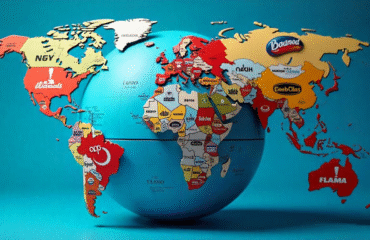The Global Dream – But at What Cost?
Every ambitious and aspiring Indian business eventually eyes international expansion. The promise of foreign markets, higher margins, and global recognition is undeniably tempting. But here’s the bitter truth—
Most SMEs that fail abroad don’t fail because of bad products.
They fail because they didn’t understand the game. They:
– overestimate the demand.
– underestimate the barriers.
– rely too heavily on what worked “back home.
The Common Blind Spots
Let’s break down what’s often missed:
1. Assuming What Works in India Will Work Everywhere
Your top-selling offer in Delhi might flop in Dubai.
Why?
Because customer needs, habits, and expectations change with geography.
Fix: – Start with market research.
– Don’t just look at demographics.
– Dive into psychographics—how they think, what they value, what triggers action.
Case Study:
A Pune-based Ayurveda skincare brand failed in the U.S. despite product quality.
Why?
Their messaging leaned too heavily on Indian cultural beliefs. When they rebranded using U.S.-centric health claims and added dermatological endorsements, conversions rose by 67%.

2. Ignoring Cultural Sensitivity in Messaging
A campaign that goes viral in India could offend audiences in the West.
Tone, imagery, and humour are all culture-coded.
Fix: –Localize, don’t just translate.
Hire regional experts or consult cross-cultural marketers to adapt your campaigns respectfully and effectively.
Example:
A gesture as simple as a “thumbs-up” can mean something rude in countries like Iran or Greece. You don’t want your product launch post to go viral for the wrong reasons.
3. Overcomplicating Legal & Regulatory Readiness
Many SMEs jump into exports without understanding documentation, tax treaties, or import restrictions.
Fix: Start with 2–3 target countries and get clarity on:
- Customs documentation
- Product certifications
- Tax & tariff structures
- Country-specific import laws
Consult with trade bodies like FIEO, CII, or use EXIM consultants to avoid future penalties or shipment blocks.
4. Underestimating the Power of Local Partnerships
Trying to run everything from India isn’t just hard—it’s limiting.
Fix: Build local alliances—whether it’s with distributors, marketing agencies, or logistics firms.
Global business is about who you know, not just what you sell.
These partners become your cultural translators, trouble-shooters, and sales accelerators.
Actionable Takeaways
Here’s how to avoid becoming another global cautionary tale:
- Do a deep-dive market audit before entry.
- Invest in cultural intelligence and adapt your brand story.
- Get your legal and financial documentation watertight.
- Focus on a few countries first. Master, then scale up.
- Treat international customers like new customers—not just extensions of your local base.
Mini-Checklist: Is Your Brand Global-Ready?
Before going international, make sure you can tick these off: Country-specific landing pages
✅ Multi-currency pricing options
✅ GDPR-compliant data policies
✅ Translated sales funnels & ad copy
✅ Local customer service backup
✅ Testimonials or credibility signals for that market
Frequently Asked Questions
Q: What’s the minimum budget I need to go global?
Start lean. With digital tools, a few lakhs can get you a website, test campaigns, and legal support for 1–2 countries. Just don’t skip research.
Q: Which countries are SME-friendly in 2025?
UAE, Singapore, Australia, and certain African nations (like Kenya and Ghana) are aggressively supporting SME imports with simplified policies and digital infrastructure.
Q: Should I open a physical office?
Not initially. Go digital-first, test demand, and then consider a local rep or warehouse based on traction.

Your Website = Your Global Business Card
Your website must make international customers feel like you already operate in their country. Here’s what helps:
- Clean, mobile-first design.
- Country-specific contact info.
- Testimonials from global clients.
- Local language option or simple English.
- Easy checkout and local shipping FAQs.
Simply, it’s a conversion necessity.
Real Reflection
The goal isn’t just to go global, but to grow smart globally.
So ask yourself: Am I truly ready—or just romantically optimistic?
Global marketing is not a sprint.
It’s a game of sustainable trust-building across time zones.
Wrapping Up
An aspiring Indian businessman has to enter or even think of entering a foreign market only after successful creation of the requisite groundwork. Such a detailed homework really facilitates future success.
Final Thoughts: From Missed Steps to Massive Leaps
Going global isn’t just about exporting products.
It’s about exporting vision, values, and viability.
While Indian SMEs have the ambition and talent, they often lack:
– strategic foresight
– regulatory readiness
– global mind-set
The international stage rewards those who prepare, plan, and pivot—not just those who push products.
So, if you’re an SME looking beyond borders, stop thinking “How do I sell there?”
Instead start asking: –How do I build a business that belongs there?
Because in the global game, it’s not the biggest player that wins—it’s the most adaptable.
Undoubtedly, it is entirely your call whether to expand globally without costly trial-and-error?




